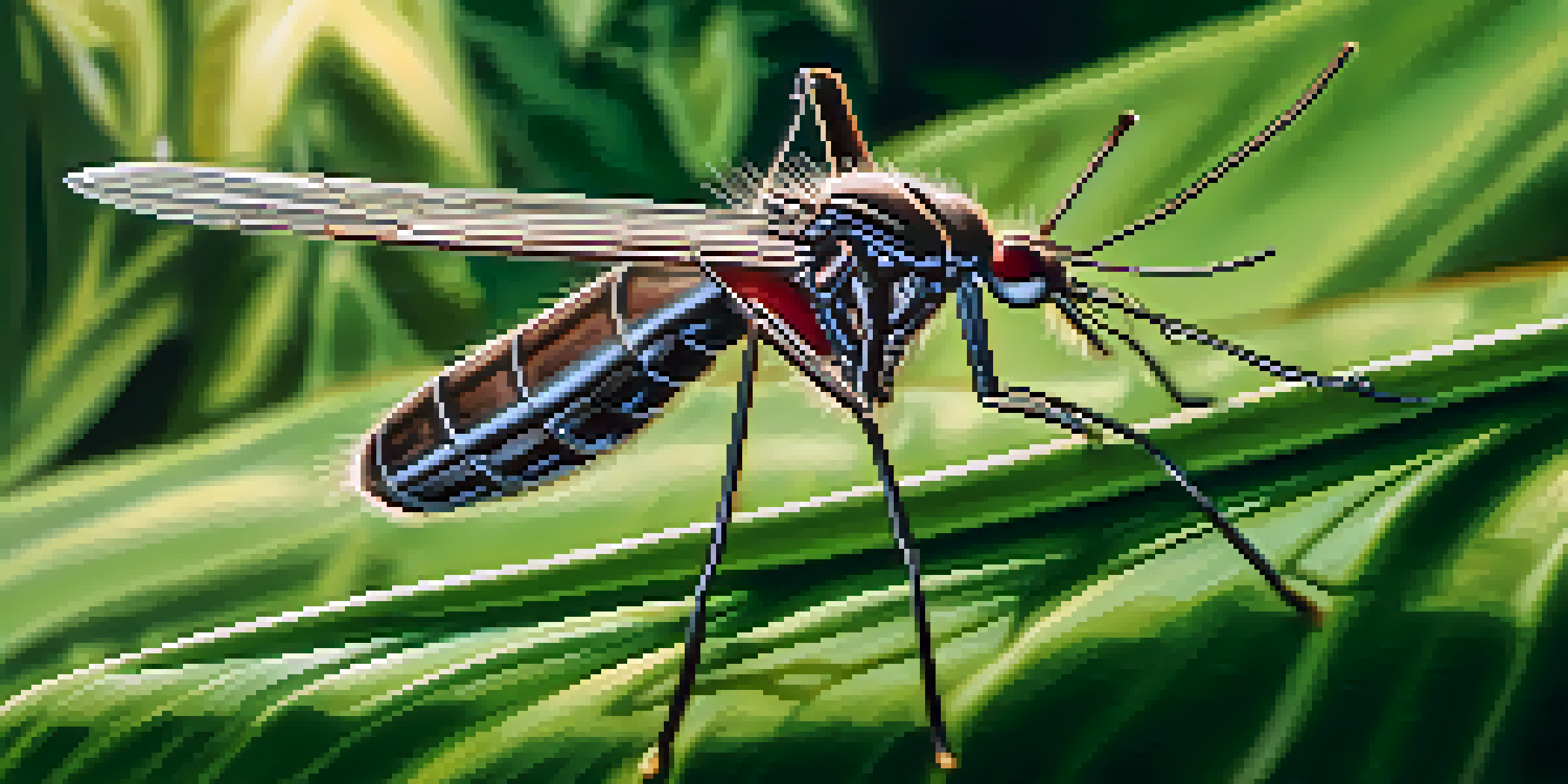Filarial Infections: Types, Symptoms, and Global Challenges

What Are Filarial Infections? An Overview
Filarial infections are a group of diseases caused by parasitic worms known as filariae. These tiny, thread-like worms are transmitted to humans primarily through the bites of infected mosquitoes and other biting insects. Once inside the body, these worms can lead to a range of health issues, often chronic and debilitating.
Health is a human right, and we must work to ensure that all people have access to the care they need.
The most prevalent types of filarial infections include lymphatic filariasis, onchocerciasis (river blindness), and loiasis. Each of these infections presents unique challenges in terms of symptoms and treatment. Understanding the differences between these infections is crucial for effective prevention and management.
Filarial infections are not just a health issue; they also pose significant socio-economic challenges. In many regions where these infections are prevalent, they can lead to long-term disability, affecting individuals' ability to work and participate in their communities.
Types of Filarial Infections Explained
The three main types of filarial infections are lymphatic filariasis, onchocerciasis, and loiasis. Lymphatic filariasis, often referred to as elephantiasis, can cause severe swelling in the limbs and genitals. Onchocerciasis, caused by the parasite Onchocerca volvulus, can lead to blindness and severe skin issues.

Loiasis, caused by the Loa loa worm, is primarily found in Central and West Africa. This infection is known for causing eye-related symptoms, as the adult worms can migrate to the eye. Each type of filarial infection requires specific diagnostic and treatment approaches.
Filarial Infections Overview
Filarial infections are chronic diseases caused by parasitic worms, leading to significant health and socio-economic challenges.
Understanding the types of filarial infections is essential for raising awareness and promoting preventive measures. Efforts to control these infections often focus on vector control, education, and accessible treatment options to mitigate their impact on affected communities.
Common Symptoms of Filarial Infections
Symptoms of filarial infections can vary widely depending on the type of infection and the severity. For lymphatic filariasis, symptoms may include swelling of the limbs, thickening of the skin, and in severe cases, disfigurement. Onchocerciasis often presents with intense itching, skin rashes, and, in advanced cases, vision loss.
The greatest threat to our planet is the belief that someone else will save it.
In the case of loiasis, the most notable symptom is the migration of the worm across the eye, causing irritation and, potentially, vision problems. These symptoms can significantly affect quality of life, leading to physical, emotional, and social challenges for those infected.
Recognizing these symptoms early is crucial for effective intervention. Timely diagnosis and treatment can prevent the progression of the disease and alleviate the suffering associated with these infections.
The Global Prevalence of Filarial Infections
Filarial infections are predominantly found in tropical and subtropical regions, affecting millions of people worldwide. According to the World Health Organization, around 120 million people are currently infected with lymphatic filariasis alone. Onchocerciasis and loiasis also pose significant public health challenges in areas where they are endemic.
The prevalence of these infections often correlates with poor sanitation, inadequate healthcare access, and limited public health infrastructure. In many affected regions, communities face a double burden of filarial infections and other diseases, complicating healthcare efforts.
Symptoms Vary by Infection Type
Each type of filarial infection presents unique symptoms, ranging from severe swelling to vision problems, impacting quality of life.
Addressing the global prevalence of filarial infections requires a coordinated response. International health organizations, governments, and local communities must work together to implement effective strategies for prevention, control, and treatment.
Challenges in Diagnosing Filarial Infections
Diagnosing filarial infections can be quite challenging due to the similarity of symptoms with other tropical diseases. Many healthcare providers may not have extensive experience with these infections, leading to misdiagnosis or delayed treatment. Additionally, the life cycle of filarial worms can make them difficult to detect in blood samples.
In many cases, specialized tests are required to confirm the presence of these parasites, which may not be readily available in resource-limited settings. This lack of access can hinder timely diagnosis and treatment, exacerbating the health issues faced by affected individuals.
Improving diagnostic capabilities is essential for controlling filarial infections. Training healthcare workers, increasing access to diagnostic tests, and raising awareness about these infections can significantly enhance early detection and effective management.
Treatment Options for Filarial Infections
Treatment for filarial infections typically involves antiparasitic medications aimed at eradicating the worms from the body. Medications such as diethylcarbamazine (DEC) and ivermectin are commonly used to treat lymphatic filariasis and onchocerciasis, respectively. These medications can help alleviate symptoms and prevent further complications.
In some cases, additional treatments may be necessary to address the complications resulting from these infections. For instance, individuals with severe lymphedema may require physical therapy and skin care to manage swelling and prevent infections.
Prevention and Treatment Strategies
Effective prevention focuses on vector control and community education, while treatment often involves antiparasitic medications to eliminate infections.
Access to effective treatment is crucial for reducing the burden of filarial infections. Initiatives to provide free or low-cost medications, combined with education on disease prevention, play a vital role in improving health outcomes in affected communities.
Preventive Measures Against Filarial Infections
Preventing filarial infections largely centers around controlling the vectors that transmit these parasites. This includes measures such as using insect repellent, wearing protective clothing, and utilizing bed nets treated with insecticide. Community awareness and education about the risks and preventive practices are also key components in reducing transmission.
In addition to personal protective measures, community-level interventions are critical. These may involve environmental management to eliminate standing water where mosquitoes breed, as well as campaigns to distribute medications in endemic areas to prevent infections.

Ultimately, a multi-faceted approach to prevention can significantly reduce the incidence of filarial infections. Collaboration between governments, healthcare organizations, and local communities is essential for implementing effective strategies and ensuring long-term success.